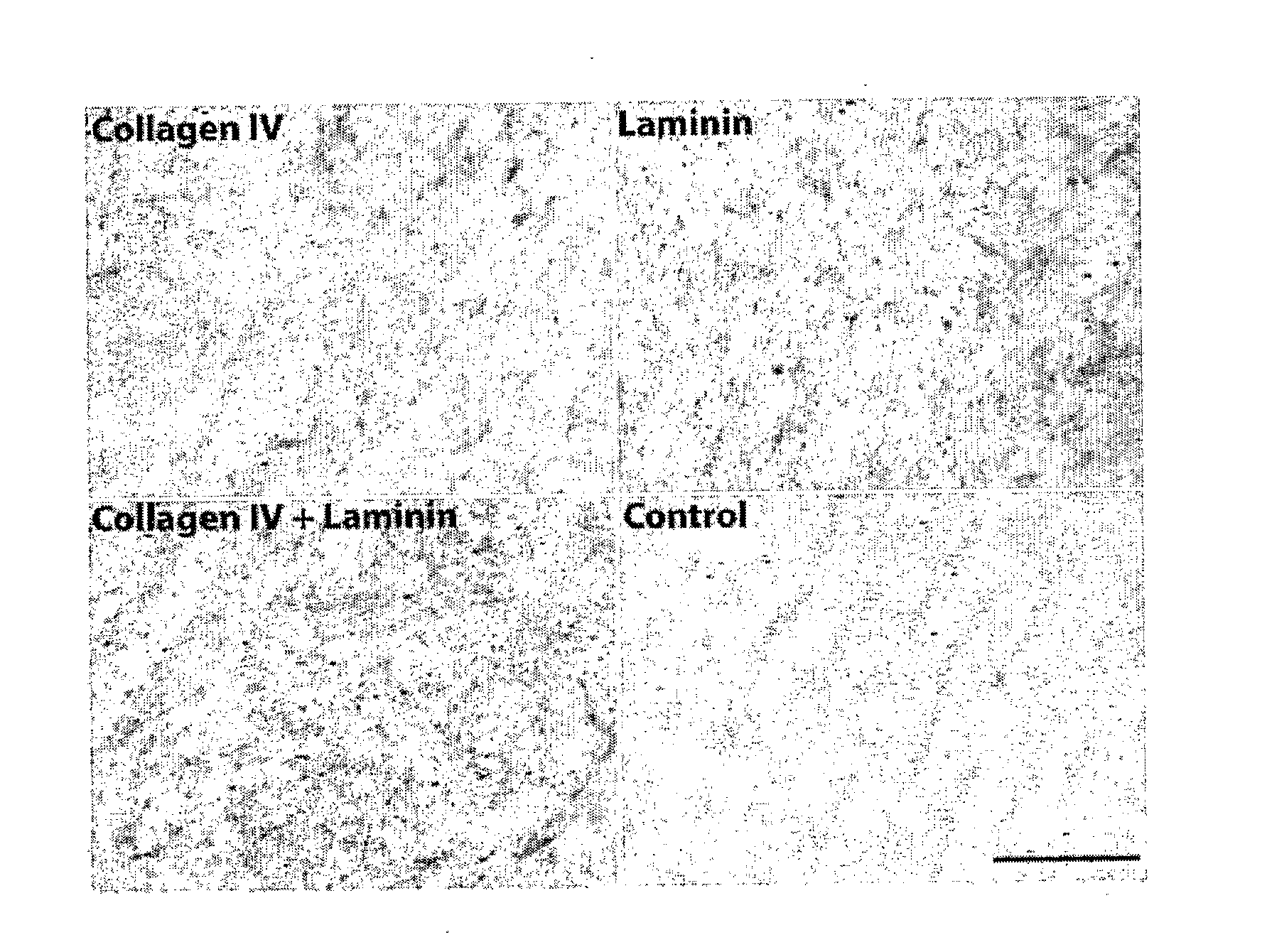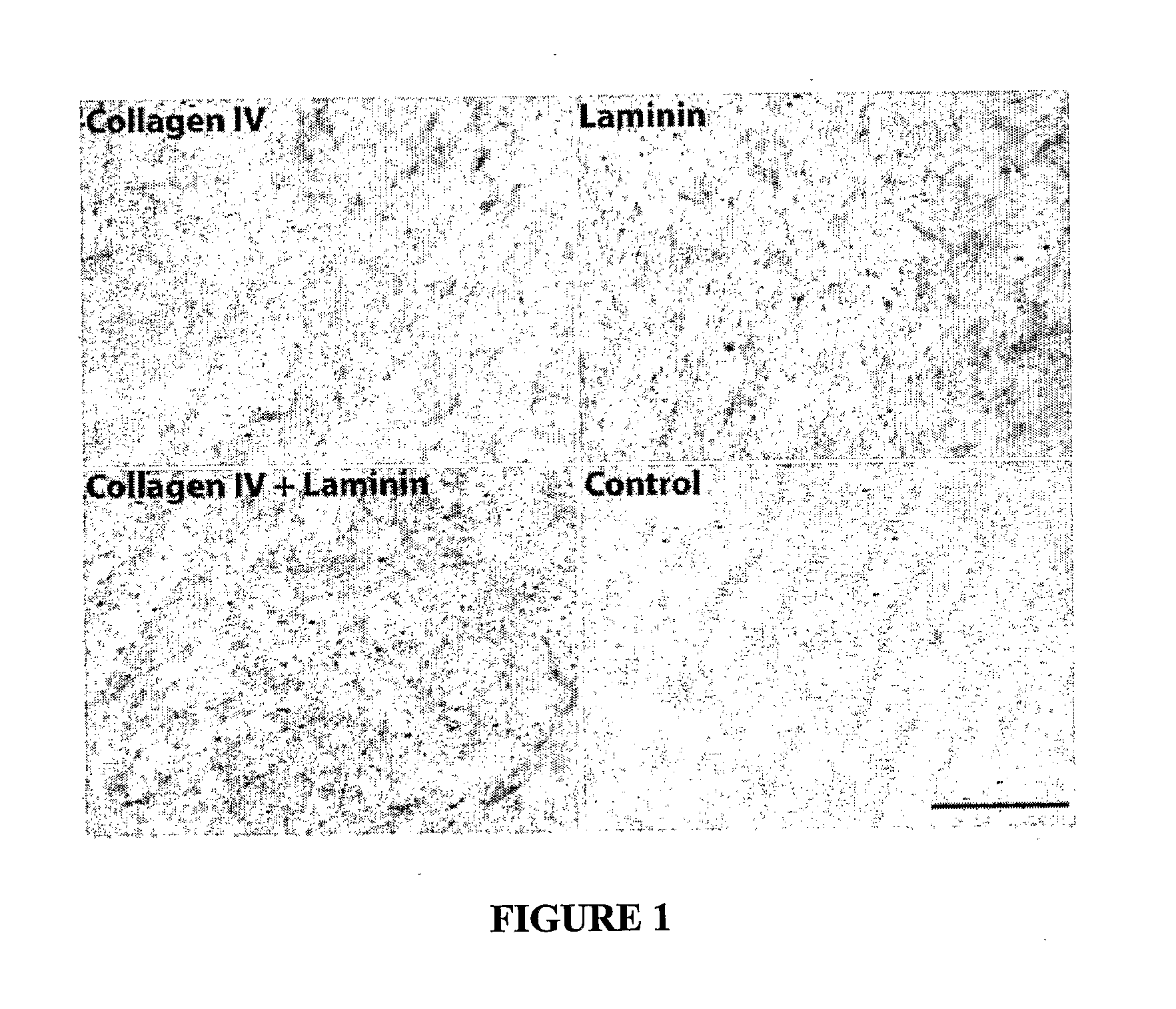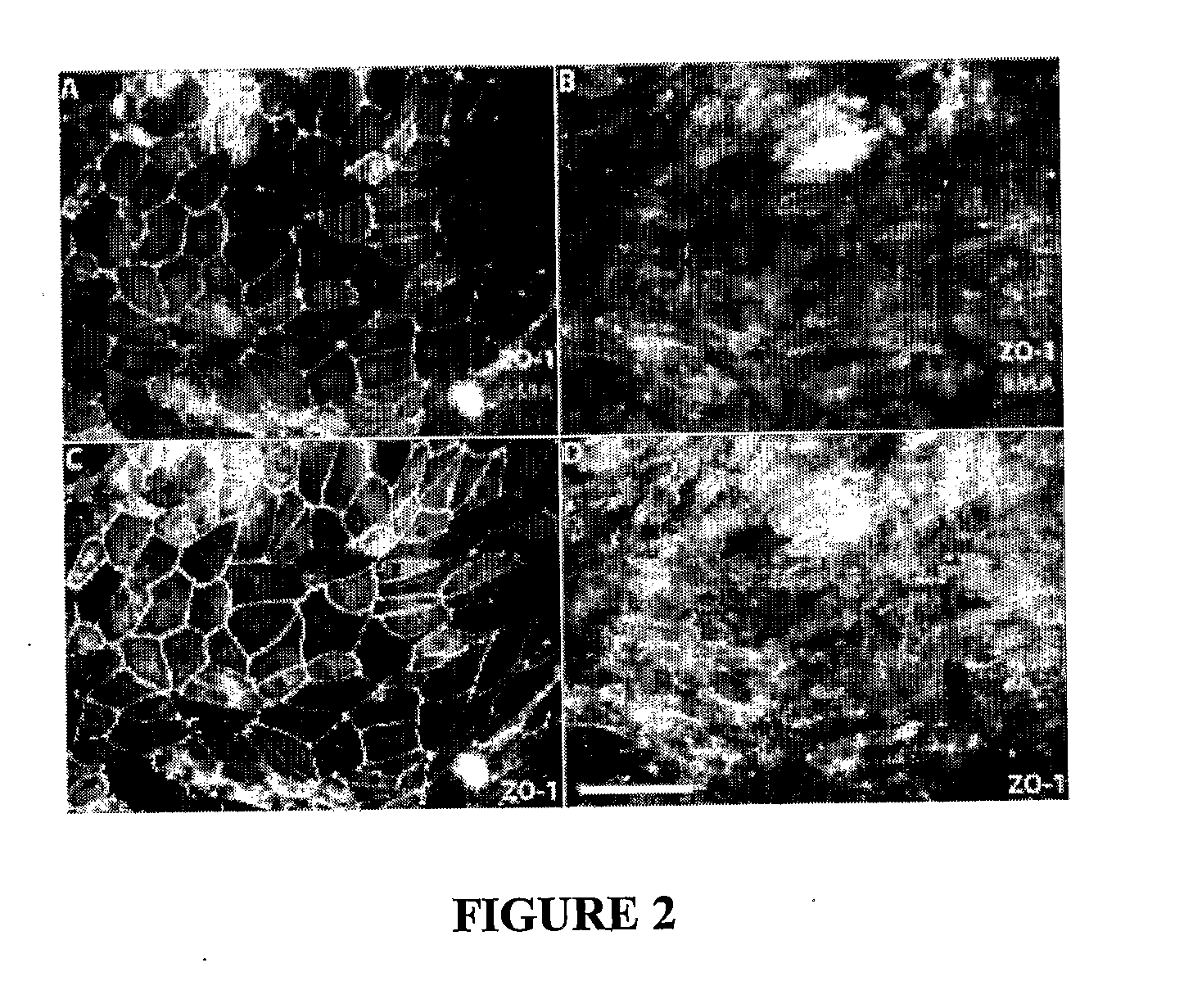Method for formation of renal tubules
a technology of renal tubules and tubules, which is applied in the direction of kidney/kidney cells, artificial cell constructs, biochemical apparatus and processes, etc., can solve the problems of inability to clear nanoparticles above inability to address in vivo models, and inability to clear nanoparticles over a certain size limit, etc., to achieve easy image, high resolution, and facilitate microscopic monitoring of the transport process in the present tubules
- Summary
- Abstract
- Description
- Claims
- Application Information
AI Technical Summary
Benefits of technology
Problems solved by technology
Method used
Image
Examples
example 1
[0126]ECM coatings were tested and the performance of primary human renal proximal tubule cells was monitored during extended periods of several weeks. During this process, it was observed that the formation of differentiated monolayers by human primary renal proximal tubule cells (HPTCs) was closely coupled to tubulogenesis, which occurred on solid surfaces. It was found that tubule formation is faster on ECMs consisting of collagen IV+laminin. The longer the monolayer is maintained, the later tubule formation occurs. This example relates to the experiments leading to tubule formation on solid surfaces.
[0127]Materials and Methods
[0128]Cell culture assay: All cell culture media used were also supplemented with 1% penicillin / streptomycin solution (ScienCell Research Laboratories, Carlsbad, Calif., USA), and all cells were cultivated at 37° C. in a 5% CO2 atmosphere. HPTCs were obtained from ScienCell Research Laboratories and were cultivated in basal epithelial cell medium supplement...
example 2
[0177]The four panels in FIG. 5 show different parts of a 2D tubule consisting of HPTCs (Scale bars: 100 μm).
[0178]First, histidine-coated quantum dots (QDs, green fluorescence) were added to culture medium. (DAPI counterstaining of cell nuclei: blue). 20 hours later the specimens were fixed and the 2D tubules were examined by fluorescence microscopy. The images show that the QDs were uptaken by HPTCs. There was no evidence for transport of the QDs into the tubular lumen (i.e. no enrichment of QDs in the lumen of the 2D tubule).
[0179]Next, transcellular transport of the QDs was examined using TRANSWELL™ plates where a monolayer of HPTCs grew on the lower side of a porous membrane separating two compartments (apical sides of cells facing the bottom compartment). QDs were added to the upper compartment. Occurrence of QDs in the bottom compartment of the TRANSWELL™ system (corresponding to the tubular lumen) could indicate transcellular transport. However, occurrence of QDs in the basa...
example 3
Materials and Methods
[0184]Cell culture: Different batches of HPTCs were obtained from ScienCell Research Laboratories (Carlsbad, Calif., USA). Cells were cultivated in basal epithelial cell medium supplemented with 2% fetal bovine serum (FBS) and 1% epithelial cell growth supplement (ScienCell Research Laboratories). In some experiments, TGF-β1 (R&D Systems, Minneapolis, Minn., USA) was added at a concentration of 10 ng / ml after monolayer formation.
[0185]Cells were cultivated on uncoated multi-well plates (Nunc, Naperville, Ill., USA) or plates coated with human laminin or other ECMs as described in Zhang et al. Biomaterials 2009 30: 2899-2911. The seeding density was 5×104 cells / cm2, unless otherwise indicated.
[0186]The wells of diagnostic printed slides have a diameter of 2 mm and a glass bottom. No ECM coating was applied in experiments using the printed slides.
[0187]Cells were seeded at a density of 2.65×105 cells / cm2 into glass capillaries (inner diameter=0.58 mm; Sutter Instr...
PUM
| Property | Measurement | Unit |
|---|---|---|
| length | aaaaa | aaaaa |
| diameter | aaaaa | aaaaa |
| penetration depth | aaaaa | aaaaa |
Abstract
Description
Claims
Application Information
 Login to View More
Login to View More - R&D
- Intellectual Property
- Life Sciences
- Materials
- Tech Scout
- Unparalleled Data Quality
- Higher Quality Content
- 60% Fewer Hallucinations
Browse by: Latest US Patents, China's latest patents, Technical Efficacy Thesaurus, Application Domain, Technology Topic, Popular Technical Reports.
© 2025 PatSnap. All rights reserved.Legal|Privacy policy|Modern Slavery Act Transparency Statement|Sitemap|About US| Contact US: help@patsnap.com



